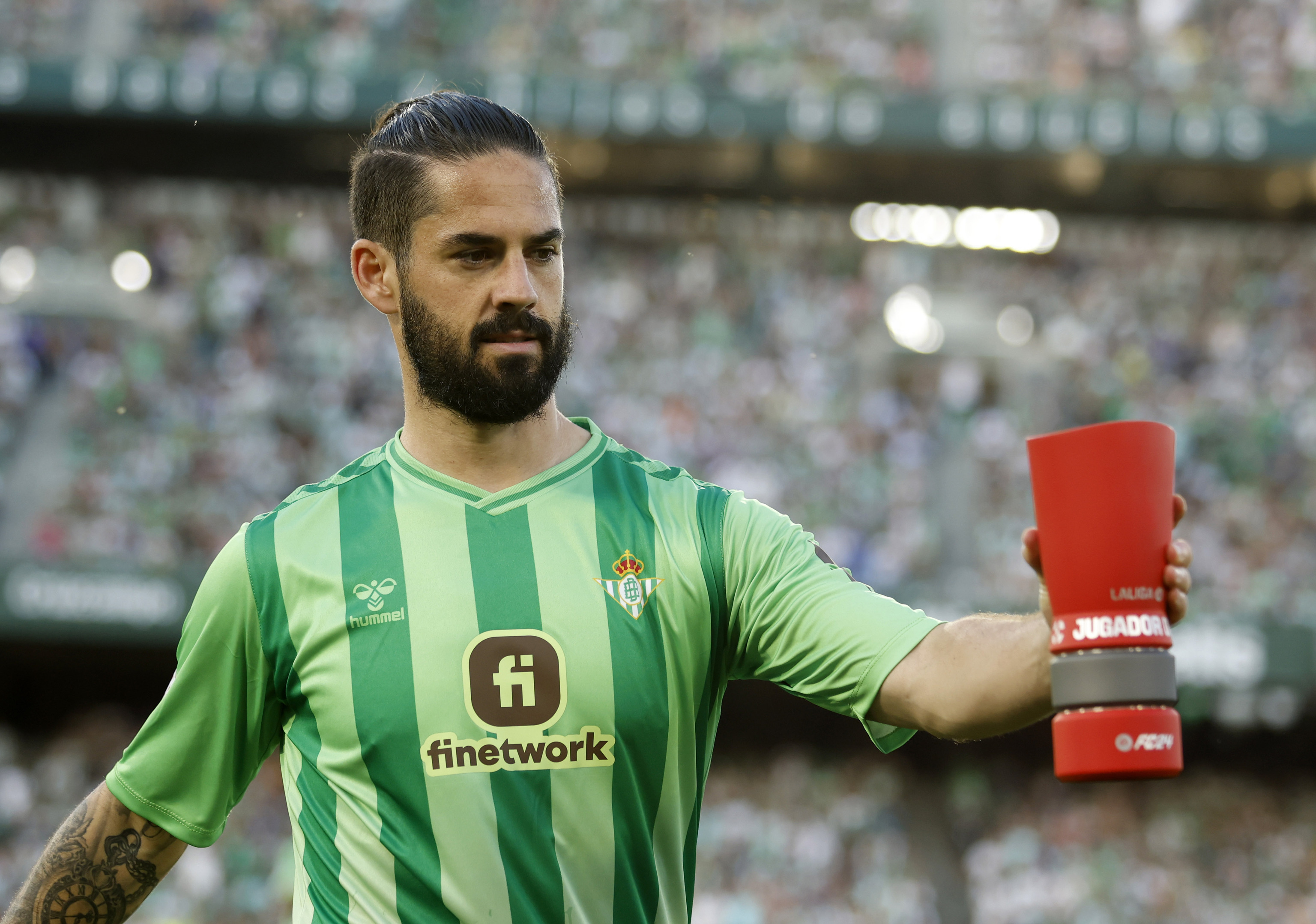He spent six months without a team, with all that it meant for a footballer already in his thirties. He bared his soul in an interview where he admitted that part of the blame for his fate was his alone. Instead of giving in, the player took matters into his own hands and got in shape like never before in his life. Dani Jiménez and Rodrigo Carretero, from the Crys Díaz gym, were responsible for getting Isco Alarcón back to professional football in the way he did. But how did they do it? And, after his unfortunate injury, will they do it again?
The foundation was a mix of cardio, strength, and HIIT that worked the footballer's entire body from upper to lower body, with the focus on glutes and abdomen. "Glutes for running power, for stabilization, also for changes of pace, and then the abdomen, which is like the connection between the upper and lower body, helping us stay stable against any impact, deceleration, turn...," reveals Jiménez.
Specifically, for Isco's coaches, it is important that a footballer's training includes one of the main characteristics of the Malaga-born player: decelerations. "I can have a car with a lot of horsepower, but if in the end I don't have brakes...," explains Dani about the importance of adding the ability to decelerate abruptly to speed, strength, and power.
As we could see, many of the exercises the footballer performed focused on quick starts and stops, often with added resistance to make the workout tougher and improve reaction time. These were short, explosive exercises that raised heart rates in less than a minute.
The rubber platform was a kind of torture rack for an elite athlete where the color of the elastic determined the resistance used in the exercise. Jumps, runs to cones, and lunges where, by removing the resistance, you felt like you were flying. HIIT at its peak. "Within a football field, you have to sprint 15 or 20 meters and then contest a header where you need leg strength. You have to mix it up to bring the player closer to what they will encounter on the field," explains Dani.
A mix where, even though they did squats with jumps, sprints, and other leg exercises, the upper body also comes into play, useful in collisions, heading, and tussles. "A player has to be as sharp as possible but, although it sounds contradictory, also as strong as possible," notes the coach.
In the case of a footballer, the position on the field is also important; some muscle fibers are worked more than others to improve endurance, strength, or speed. But they all share the importance of adding coordination to their training: "I can be the player who lifts the most in squats, but if I can't coordinate it when jumping to head the ball, it's worthless," admits the trainer.
This coordination extends to certain limits in a gym, where, as we saw, a ball can be added to part of the training. However, from Crys Dyaz, they also mention taking some of the workouts to a field to fully develop the potential gained. "It's the final phase. Like saying: 'physically we are one hundred percent, now we have to transfer that to a field, a long ball, a cross, or a header," points out Jiménez.
The training of an elite footballer must be complemented with a complete and abundant nutrition, not scarce since players consume many calories. Dani Jiménez explains that the high caloric expenditure of elite footballer training prevents players from gaining much muscle mass, which is why they appear so "lean," but it is important to have strength to withstand collisions and jumps.
The last piece, which we highlighted at the beginning as Isco's main strength, is the mental aspect, the ability to endure pain, resilience. Dani emphasizes the ability of elite athletes to train with very heavy loads thanks to the body's memory of having done it since a very young age. A willpower that can be acquired through effort and perseverance.
Thus, Crys Dyaz encourages all amateur footballers to engage in this type of training, not to aspire to the First Division but to see how, "in six weeks," they can improve their starts, turns, in short, their football. Even if it's just to feel better and impress friends. It's not insignificant.
TRAINING TYPE
Mobility
Warm-up
Block 1 Strength
- Hip thrust: 14 reps, 5 sets
- Deadlift: 10 reps explosive, 4 sets
- Weighted stride deceleration: 8 reps per leg, 3 sets
- Thruster: 12 reps, 4 sets
- Overhead slamball: 12 reps, 3 sets
Specific block 2 + Plio
- High box jump: 10 reps, 4 sets
- From box deceleration to floor + ladder coordination work: 20 seconds, 5 sets
- Unipodal Pliometeia: 12 reps + overhead dips 12 reps, 4 sets with each leg
- Continuous run 1 minute + ball sprint 20 seconds: 5 series
Stretching + Compression boots
